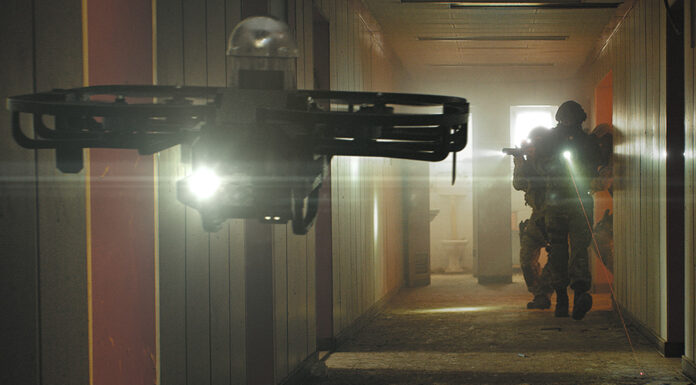One of the apparent reasons, was the anticipated ‘information overload’ at TOCs. Well, according to a US Marine officer fresh out of OIF describing his workload in combat:
“Members of my force often had to use a helmet headset, four radios and two laptop computers- all crammed into a light armored vehicle-all at once!” adding that” we were overwhelmed with communications systems for every eventuality, but these did not really integrate with each other. For example, a Marine commander riding aboard a LAV had to use a headset to use the intercom to talk to his driver and gunner, answer his squad leaders by grabbing hand-held radio and speak to accompanying infantry by another radio, all this while monitoring two laptop positions of friendly and hostile forces!”
(This is a clear evidence of the risk of overloading a command vehicle with excessive systems. Usually a rapid flick through an intercom button should allow frequency changes without removing the harness!)
To make matters worse, one had to have a closer look at tactical command vehicles. Here the clutter was beyond all imagination: every single shelf was occupied by a radio and seat spaces loaded with open computers. Any single system compatible to share information could have solved this acute problem, which made the workload under combat conditions nearly impossible on the move.
Reports indicate that sharing messages was often solved only by the new Blue Force Tracking system. But not all units had this facility, working through the Mobile Data Automated Communications Terminal (MDACT), offering the same functions, as Blue Force Tracking (BFT), but unable to talk to each other!
BFT is a marvelous system. Derived from the FBCB2 program, it provides unprecedented vertical and horizontal information integration. Featuring a large mission data base, the information is displayed on maps, overlays of individual unit platforms. Positioning information gathered from GPS and data provided by users are automatically sent via L-band satellite to data fusion centers at command centers. The map displays not only combat messages, but using geo-referenced satellite imagery it provides updated information on terrain features etc.
The trend is to reduce the size of the BFT equipment to handheld versions for lower tactical commanders. There is already a mini model available, used sofar by some SOF units, developed by General Dynamics Mission Systems, as Individual Combat Identification System. The pocket sized version sends coded signals every five to 10 minutes relaying their GPS coordinates to TOCs.
How impressive BFT performed during OIF could be highlighted by an incident south of Baghdad. On April 1 Alpha Company of 69th Armor, was advanced vanguard east of Karbala, when the commander was about to order “Red Free” (meaning ‘ shoot at everything that moves in front’). What he had not been told was that a US infantry force, was moving across his front, a situation ‘ripe for fratricide’. The tank officer identified the move displayed as blue icon on his BFT screen and immediately ordered “Hold!”, preventing a serious blue-on-blue incident.
Here is how it worked: about every five minutes, or 800 yards movement, the platoon leaders BFT computer automatically sends position data changes through satellite to internet servers. The server updates every BFT equipped platform within reach, so that all commanders receive constantly updated situational awareness.
A major problem, repeatedly mentioned by lower command levels, which has to be solved quickly, is available bandwidth. A senior commander mentions this in his report, demanding solutions to cope with this deficiency: “No matter how perfect a future network and CP we build, it won’t do us much good until we fix the overarching problem of bandwidth management.” Limited bandwidth was a major issue during OIF. While fixed command and control installations reliably use high-bandwidth communications, the communications architecture for mobile or semi-mobile CPs at the tactical level is too fragile and not robust enough to support our needs. It negatively affected collaboration, information sharing and in some cases, the Commander’s ability to command. Satellite based communication works; but we need more bandwidth to push the synergy of network enhanced operations down to the tactical level.
In an environment where competition for limited bandwidth is fierce, we must seek efficiencies through a more sophisticated management solution. The time to fix bandwidth problems is now, before we deploy to the next fight!
Once the Army overcomes satellite bandwidth constraints, we can aggressively address the “Digital Divide” that exists between the operational and the tactical levels of war. We can extend the power of the network down to the tactical level. Despite our efforts to realize network enhanced warfare since Desert Storm, the trigger puller on the ground still can’t tap into the network and realize its benefits. In OIF, this was most pronounced in dissemination of intelligence information”.
Additional parts of this article:
- Operation Iraqi Freedom C4ISR Lessons Learned
- Combat Implementation of the NCW Doctrine part I
- Combat Implementation of the NCW Doctrine part II
- Tactical C3 Performance
- Mobile Command Post Operation
- Tactical Operations Center Performance
- Beyond Line-of-Sight Communications
- Battle Command on-the-Move



















